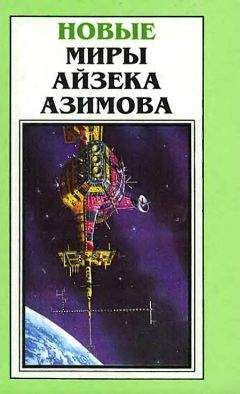94
R.E. Kraut and R.E. Johnston, «Social and emotional messages of smiling: An ethological account», Journal of Personality and Social Psychology, 37 (1979), 1539–53.
O. Epstein, G.D. Perkin and J. Cookson, Clinical Examination (Edinburgh: Elsevier Health Sciences, 2008), 408.
S.H. Fraiberg, «Blind infants and their mothers: An examination of the sign system», in M. Lewis and L. Rosenblum (eds), The effect of the Infant on Its Caregiver (New York, NY: Wiley, 1974 pp. 215–232).
C. Darwin, The Expression of the Emotions in Man and Animals (London: John Murray, 1872).
Виктор Франкл. Человек в поисках смысла. М.: Прогресс, 1990; V. Frankl, Man's Search for Meaning (New York, NY: Simon and Schuster, 1959), 54–56.
T. Anderson, Den of Lions (New York, NY: Ballantine Books, 1994).
R.R. Provine, Laughter: A Scientific Investigation (New York, NY: Penguin 2001).
J. Panksepp and J, Burgdorf, «Laughing» rats and the evolutionary antecedents of human joy?», Physiology and Behavior, 79 (2003), 533–47.
L. Weiskrantz, J. Elliott and C. Darlington, «Preliminary observations on tickling oneself», Nature, 230 (1971), 598–9.
S.J. Blakemore, D.M. Wolpert and C.D. Frith, «Central cancellation of selfproduced tickle sensation», Nature Neuroscience, 1 (1990), 635–40.
S.J. Blakemore, D.M. Wolpert and C.D. Frith, «Why can't you tickle yourself?», NeuroReport, 11 (2000), R11–16.
J.M.S. Pearce, «Some neurological aspects of laughter», European Neurology, 52 2004), 169–71.
Существует много литературы о предпочтениях младенцев, связанных с матерью. Относительно запаха матери: J.M. Cernack and R.H. Porter, «Recognition of maternal axillary odors by infants», Child Development, 56 (1985), 1593-8. О материнском лице: I.M. Bushnell, F.Sai and J.T. Mullen, «Neonatal recognition of the mother's face». Голос матери: A.J. DeCasper and M.J. Spence, «Parental maternal speech influences newborns» perception of speech sounds», Infant Behavior and Development, 9 (1986), 133–50.
W.C. Roedell and R.G. Slaby, «The role of distal and proximal interaction in infant social preference formation», Developmental Psychology, 13 (1977), 266–73.
C. Ellsworth, D. Muir and S. Han, «Social-competence and person-object differentiation: An analysis of the still-face effect», Developmental Psychology, 29 (1993), 63–73.
L. Murray, A. Fiori-Cowley, R. Hooper and P. Cooper, «The impact of postnatal depression and associated adversity on early mother-infant interactions and later infant outcome», Child Development, 67 (1996), 2512–26.
H.R. Schaffer, The Child's Entry into a Social World (London: Academic Press, 1984).
M. Lewis, «Social development», in A.M. Slater and M. Lewis (eds) (Oxford: Oxford University Press, 2007). Эта работа дает хорошее общее представление о раннем социальном развитии, с. 233–252.
Лоренц относил сюда не просто большие головы, но и характерные выпуклые лбы всех детенышей, курносые носы и относительно уплощенную поверхность лица (морды) в сравнении со взрослыми особями. – Примеч. ред.
K. Lorenz, «Die Angebornen Formen mogicher Erfahrung», Zeitschrift fur Tierpsychologie, 5 (1943), 233–409.
Чрезвычайно большеголовая и большеглазая сексапильная девушка из американских рисованных мультфильмов, впервые появившаяся еще в 1930-х годах. – Примеч. пер.
W. Fullard and A.M. Reiling, «An investigation of Lorenz's babyness», Child Development, 50 (1976), 915–22.
S.E. Taylor, The Tending Instinct (New York, NY: Henry Holt, 2001).
S. Levine, D.F. Johnson and C.A. Gonzalez, «Behavioral and hormonal responses to separation in infant rhesus monkeys and mothers, Behavioral Neuroscience, 99 (1985), 399–410.
В частности, пищеварение и восстановление тканей. – Примеч. ред.
M.C. Larson, M.R. Gunnar and L. Hertsgaard, «The effects of morning naps, car trips and maternal separation on adrenocortical activity in human infants», Child Development, 62 (1991), 362–72.
P.S. Zeskind and B.M. Lester, «Analysis of infant crying», in L.T. Singer and P.S. Zeskind (eds), Biobehavioral Assessment of the Infant (New York, NY: Guilford, 2001), 149–66.
Baby It's You: The First Three Years, Emmy Award-winning series produced by Wall to Wall for UK's Channel 4 (1994).
J. Bowlby, Attachment and Loss, vol. 1 Attachment (London: Hogarth Press 1969).
R.A. Spitz, «Motherless infants», Child Development, 20 (1949), 145–55.
M.D.S. Ainsworth, «Infancy in Uganda: Infant care and the growth of love» (Baltimore, MD: John Hopkins University Press, 1967).
M.D.S. Ainsworth, M.C. Blehar, E. Waters and S. Wall, Patterns of Attachment: A Psychological Study of the Strange Situation (Hillsdale, NJ: Erlbuam, 1978).
Это подразумевает, что и сам ребенок подспудно уверен в надежности своих отношений с матерью: уверен, что она его не бросит, что она его любит и всегда заботится о нем, поэтому он ведет себя довольно спокойно. – Примеч. ред.
M.H. van IJzendoorn and P.M. Kroonenberg, «Cross-cultural patterns of attachment: A meta-analysis of the strange situation», Child Development, 59 (1988), 147–56.
J. Kagan, «Temperament and the reactions to unfamiliarity», Child Development, 68 (1997), 139–43.
C. Hazan and P. Shaver, «Romantic love conceptualized as an attachment process», Journal of Personality and Social Psychology, 52 (1987), 511–24.
J.A. Simpson, «Influence of attachment style on romantic relationships», Journal of Personality and Social Psychology, 59 (1990), 971–80.
H. Lane, The Wild Boy of Aveyron (Cambridge, MA: Harvard University Press, 1979).
J.M.G. Itard, An Historical Account of the Discovery and Education of a Savage Man or of the First Developments, Physical and Moral of the Young Savage Caught in the Woods Near Aveyron in the Year 1798 (London: Richard Phillips, 1802), 17.
G. Bremner, Infancy (2nd ed., Oxford: Wiley-Blackwell, 2004), 2.
P.E. Jones, «Contradictions and unanswered questions in the Genie case: A fresh look at the linguistic evidence», Language and Communication, 15 (1995), 261–80.
U. Firth, Autism: Explaining the Enigma (2nd ed., Oxford: Wiley-Blackwell, 2003).
Alvin Powell, interview with Chuck Nelson, «Breathtakingly awful», Harvard Gazette (5 October 2010).
D.E. Johnson, D. Guthrie, A.T. Smyke, S.F. Koga, N.A. Fox, C.H. Zeanah and C.A. Nelson, «Growth and associations between auxology, caregiving environment, and cognition in socially deprived Romanian children randomized to foster vs ongoing institutional care», Archives of Pediatrics and Adolescent Medicine, 164 (2010), 507–516.
M. Rutter, T.G. O'Connor and the English and Romanian Adoptees (ERA) Study Team, «Are there biological programming effects for psychological development? Findings from a study of Romanian adoptees», Developmental Psychology, 40 (2004), 81–94.
H.F. Harlow and M.L. Harlow, «The affectional systems», in A.M. Schrier, H.F. Harlow and F. Stollnitz (eds), Behavior of Nonhuman Primates, vol. 2 (New York, NY: Academic Press, 1965).
T. Field, M. Hernandez-Reif and J. Freedman, «Stimulation programs for preterm infants», Social Policy Report, 18 (2004), 1–19.
D.O. Hebb, «The effects of early experience on problem solving at maturity», American Psychologist, 2 (1947), 306–7.
J.T. Cacioppo, J.H. Fowler and N.A. Christakis, «Alone in the crowd: The structure and spread of loneliness in a large social network», Journal of Personality and Social Psychology, 97 (2009), 977–91.
H. Ruan and C.F. Wu, «Social interaction-mediated lifespan extension of Drosophila Cu/Zn superoxide dismutase mutants», Proceedings of the National Academy of Sciences of the United States of America, 105: 21 (2008), 7506–10.
R.S. Kempe and C.H. Kempe, Child Abuse (Cambridge, MA: Harvard University Press, 1978).
D.G. Dutton and S. Painter, «Emotional attachments in abusive relationships. A test of traumatic bonding», Violence and Victims, 8 (1993), 105–120.
G.A. Morgan and H.N. Ricciuti, «Infants» responses to strangers during the first year», in B.M. Foss (ed.), Determinants of Infant Behaviour, vol. 4 (London: Methuen, 1967).
A.N. Meltzoff, P.K. Kuhl, J. Movellan and T.J. Sejnowski, «Foundations for a new science of learning», Science, 325 (2009), 284–8.
A.N. Meltzoff, «Infant imitation and memory: Nine-month-olds in immediate and deferred tests», Child Development, 59 (1988), 217–25.
G. Gergely, H. Bekkering and I. Kirly, «Rational imitation of goal directed actions in preverbal infants», Nature, 415 (2002), 755.
A.N. Meltzoff and R. Brooks, «Self-experience as a mechanism for learning about others: A training study in social cognition», Developmental Psychology, 44 (2008), 1257–65.
S. Itakura, H. Ishida, T. Kanda, Y. Shimada, H. Ishiguro and K. Lee, «How to build an intentional android: Infants» imitation of a robot's goal-directed actions», Infancy, 13 (2008), 519–32.
V. Gallese, L. Fadiga, L. Fogassi and G. Rizzolatti, «Action recognition in the premotor cortex», Brain, 119 (1996), 593–609.
V. Gallese, M.A. Gernsbacher, C. Heyes, G. Hickok and M. Iacoboni, «Mirror Neuron Forum», Perspectives on Psychological Science, 6 (2011), 369–407.
This claim was made by the eminent neuroscientist Vilayanur Ramachandran and is related in C. Keysers, The Empathic Brain (Los Gatos, CA: Smashwords e-book, 2011).
D.T. Neal and T.L. Chartrand, «Embodied emotion perception: Amplifying and dampening facial feedback modulates emotion perception accuracy», Social Psychological and Personality Science (2011): doi: 10.1177/ 1948550611406138.





